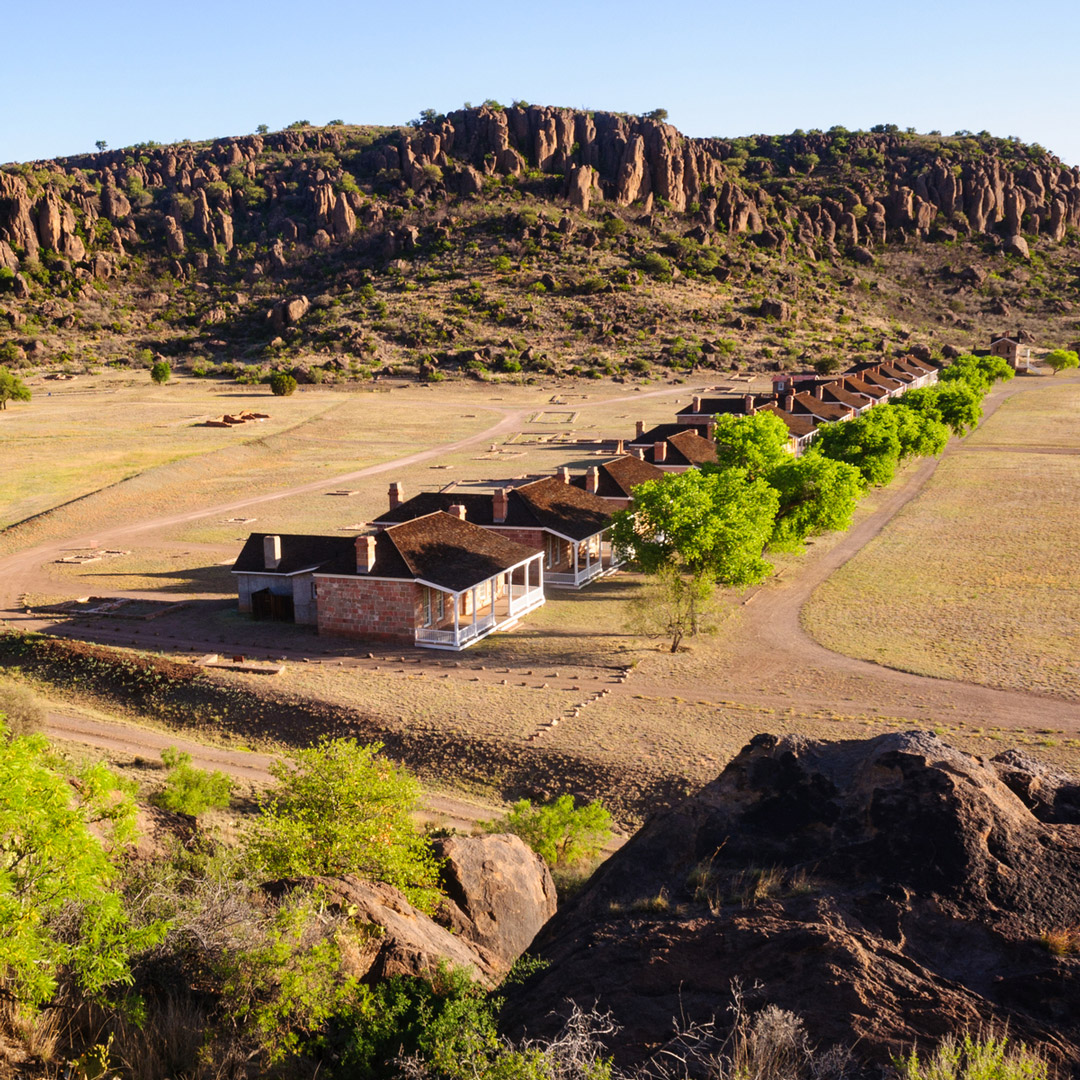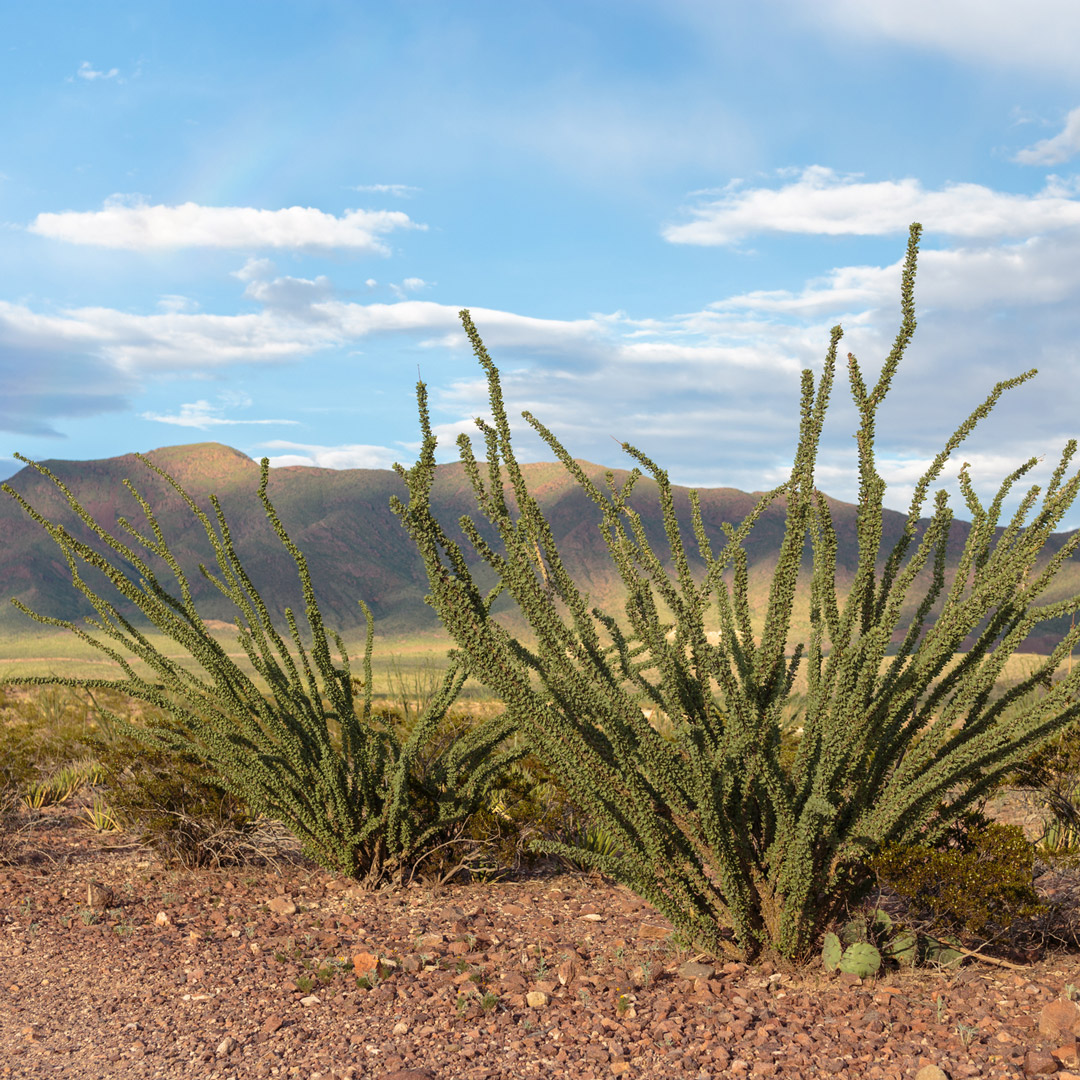Things to Do in Fort Davis, Texas
Fort Davis (population 1,201) truly feels like the Old West. Nestled among the Davis Mountains—therefore dubbed “the highest town in Texas”—Fort Davis exhibits the charm of an authentic Western community, with wide windswept streets containing flat-faced and sun-faded buildings under an enormous sky.
Fort Davis was established in 1854 by Secretary of War Jefferson Davis as one of the key army posts in West Texas’s development and defense. The fort was briefly abandoned during the Civil War, allowing Native Americans to strip much of the buildings’ wood for fuel, but it was reoccupied in 1867 and by the mid-1880s was a major operation with more than 600 men and 60-plus adobe and stone structures.
During this time, Fort Davis was home to several regiments of Buffalo Soldiers, African Americans who earned distinction as brave fighters and served alongside Anglo soldiers, a rare case of desegregation in the late 1800s. As settlement increased in the area and native populations dispersed, the fort’s original purpose became obsolete, and it was abandoned in 1891.
The town’s remote and rugged location made it a difficult destination to reach, resulting in slow growth throughout the 1900s. These days, its mild climate and natural beauty draw thousands of visitors annually from Austin and other urban areas in search of a high-altitude respite from the grueling summer heat. Fort Davis’s intrigue lies in its proximity to attractions like the fascinating McDonald Observatory and breathtaking Davis Mountains State Park, as well as its refreshingly unspoiled allure, particularly compared to the “discovered” towns of Marfa and Alpine. Here is a quick guide to some of the best things to do in Fort Davis.

Sights
Fort Davis National Historic Site
Be sure to set aside an hour or two for Fort Davis National Historic Site (on Hwy. 17 in Fort Davis, 432/426-3224, daily 8am-5pm, $7 ages 16 and older). Considered one of the country’s best remaining examples of a 19th-century frontier military post, Fort Davis draws visitors from across the country. Families and history buffs can spend as much time as they like on the self-guided tour, showcasing the post’s 20 buildings and more than 100 ruins. Of particular interest are the restored barrack buildings and officers’ quarters with period furnishings and military equipment, offering a slice of life on a frontier base in the late 1800s. Opened in 1854, Fort Davis played a key role in the history of the Southwest by protecting settlers, mail coaches, and travelers on the San Antonio-El Paso Road. The fort is especially notable for serving as the base for several regiments of African American troops known as Buffalo Soldiers, who helped maintain peaceful settlement in the region.
McDonald Observatory
Sitting high atop 6,791-foot-tall Mount Locke, the remarkable McDonald Observatory (on Hwy. 118, 16 miles west of Fort Davis, 432/426-3640, daily 10am-5:30pm, $8 adults, $7 children ages 6-12, additional charge for star parties) makes good use of its position approaching the heavens. Three large domes beckon visitors to the facility, which opened in 1939 with the world’s second-largest telescope and has served astronomers and visitors ever since. The observatory’s impressive equipment includes the massive Hobby-Eberly Telescope, with a 36-foot-wide mirror comprised of 91 laser-aligned segments, and two other telescopes to monitor the sun, stars, and planets. Visitors have the option of attending informative guided tours (11:30am and 2:30pm), solar viewings (30 minutes before the tours), and dramatic star parties (after dusk every Tues., Fri., and Sat.), but the spectacular views of the surrounding mountains and valleys are reason alone to make the journey.

Other Sights
It’s worth the 38-mile drive north of Fort Davis to experience the spectacular scenery and distinctive allure of Balmorhea State Park (Hwy. 17, 432/375-2370, $7 ages 13 and older). If you have the time, book a night at the historic adobe motel, featuring spacious rooms with cable TV but no phones. The park’s centerpiece is San Solomon Springs, gushing up to 26 million gallons of refreshingly cool water daily into a large artificial swimming pool. The deep artesian springs offer an ideal spot for scuba diving, so it’s fairly common to see divers in the far corner of the pool exploring the unique aquatic life in the crystal-clear water. The springs also feed a fascinating desert wetland, providing a habitat and life source for scores of uncommon birds and plantlife. The viewing areas—a large wooden overlook and subsurface water window—are especially intriguing.
Overlooking the Fort Davis area’s signature red-hued outcroppings is Davis Mountains State Park (Hwy. 118, 432/426-3337, $6 ages 13 and older). The park boasts 1,000 feet of elevation change and is a popular destination for hikers and campers who relish the natural beauty and cooler temperatures. Considered one of Texas’s most scenic areas, the park showcases its namesake mountains, the most extensive range in the state. The park draws mountain bikers and hikers from across the state who marvel at the incredible views of the park’s picturesque canyon formed by Keesey Creek. Hard-core campers also appreciate the park’s Limpia Canyon Primitive Area, with 10 miles of backcountry hiking trails and primitive tent campsites. Other popular activities include bird-watching, stargazing, and cruising Skyline Drive, a paved road with two spectacular overlooks showcasing the Chinati Mountains, located 75 miles to the southwest. The park is also home to the famous Indian Lodge, a historic adobe hotel still in operation.
Check out the mystique of the region’s surroundings at the Chihuahuan Desert Visitor Center (43869 Hwy. 118, 432/364-2499, Mon.-Sat. 9am-5pm, $6 adults, children ages 12 and under free). Visitors can experience the wonders of the Chihuahuan Desert region firsthand by exploring the fairly strenuous Modesta Canyon Trail, a one-hour hike, and the scenic Clayton’s Overlook hike, offering amazing views of the area’s diverse topography. The center’s succulent greenhouse features more than 200 species of Chihuahuan Desert cacti as well as other attractions, like the 20-acre botanical garden, an interpretive center with indoor and outdoor educational exhibits, and educational programs.
